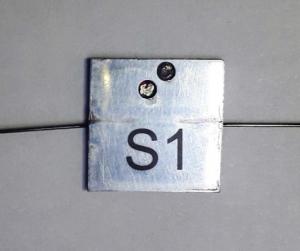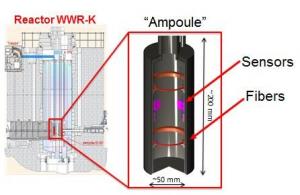Testing the resistance to radiation
Inside the ITER machine, the divertor and the blanket will be equipped with more than 1,000 fibre optic sensors for recording temperature, strain, displacement and acceleration—important feedback to estimating the health and residual lifetime of these components that are located so near the plasma. Sensor prototypes designed by the ITER Organization have already been tested thermally, mechanically and optically; now—thanks to the first Implementing Agreement of the ITER Organization-Kazakhstan Cooperation Agreement—they will soon be tested for radiation resistance.
Neutrons can darken optical fibres over time, however, resulting in a reduction of their reflective index and hence their ability to transmit information. To overcome this drawback, ITER's instruments will use a special type of non-standard FBG optical fibre (for Fiber Bragg Grating) that is neutron-resistant. FBG measurements are based on wavelength shifts rather than on the amplitude of the optical wave, which is impaired by the reduction of reflective index.
- Several four-hour irradiation campaigns at the IVG -1M research reactor in Kurchatov to test how the operational instrumentation works under different temperatures and dose rates and to define the characteristics of the samples (fibre length, temperature) for the second campaign.
- A 23-day campaign at the WWR-K research reactor in Almaty, under fully ITER-relevant neutronic fluence (up to 1020 n/cm2, for an energy higher than 0.1 MeV). (Neutronic fluence is defined as the number of neutrons per unity of surface cumulated during a given time.)
"What we are looking for from these irradiation tests, is a final demonstration that the optical FBG sensors, as developed by the ITER Organization, are substantially immune to neutron damage in terms of accuracy and stability of measurements. The neutronic fluence attainable in the WWR-K reactor is similar to the one expected on the surface of ITER's internal components at the end of operations. This is the key capability proposed by our Kazakh colleagues, and it makes the tests highly interesting to us," explains Frédéric Escourbiac who, as Divertor Section Leader, is in charge of the operational instrumentation for the internal components.




